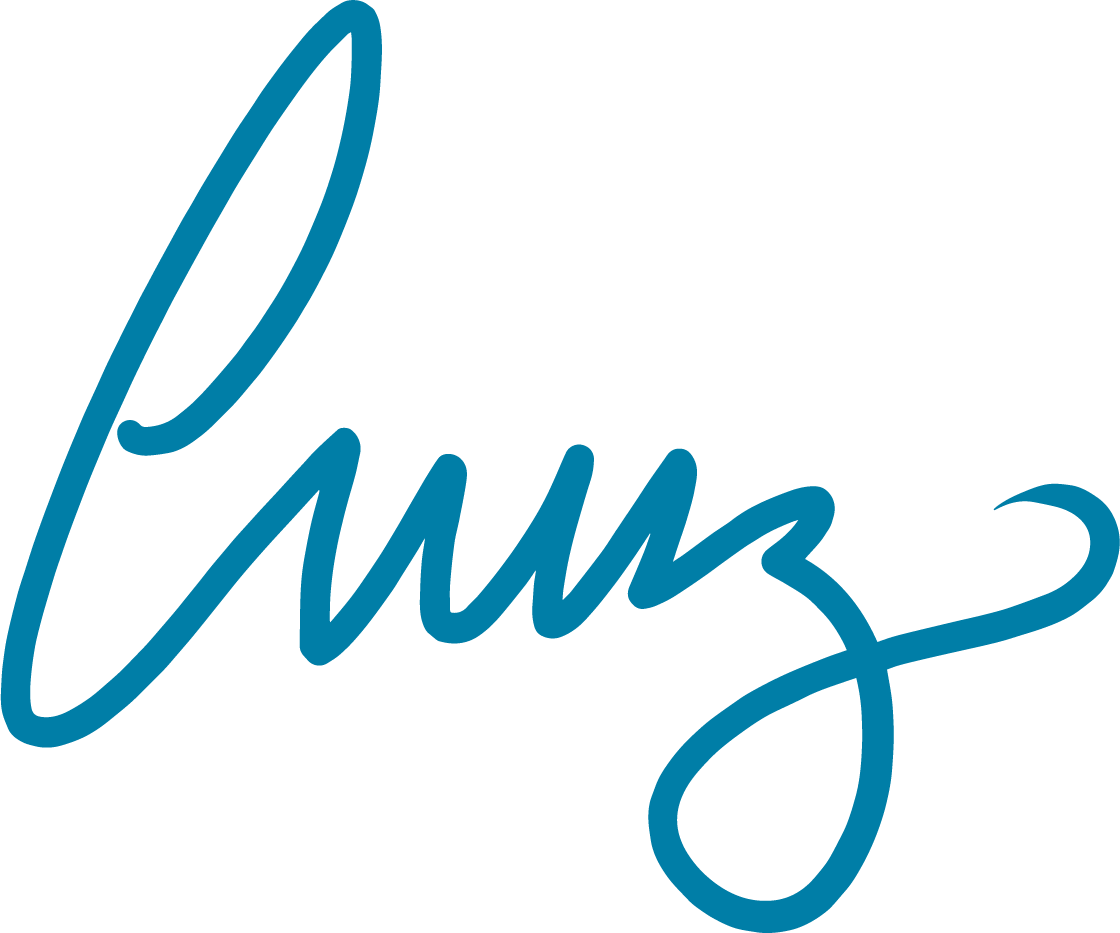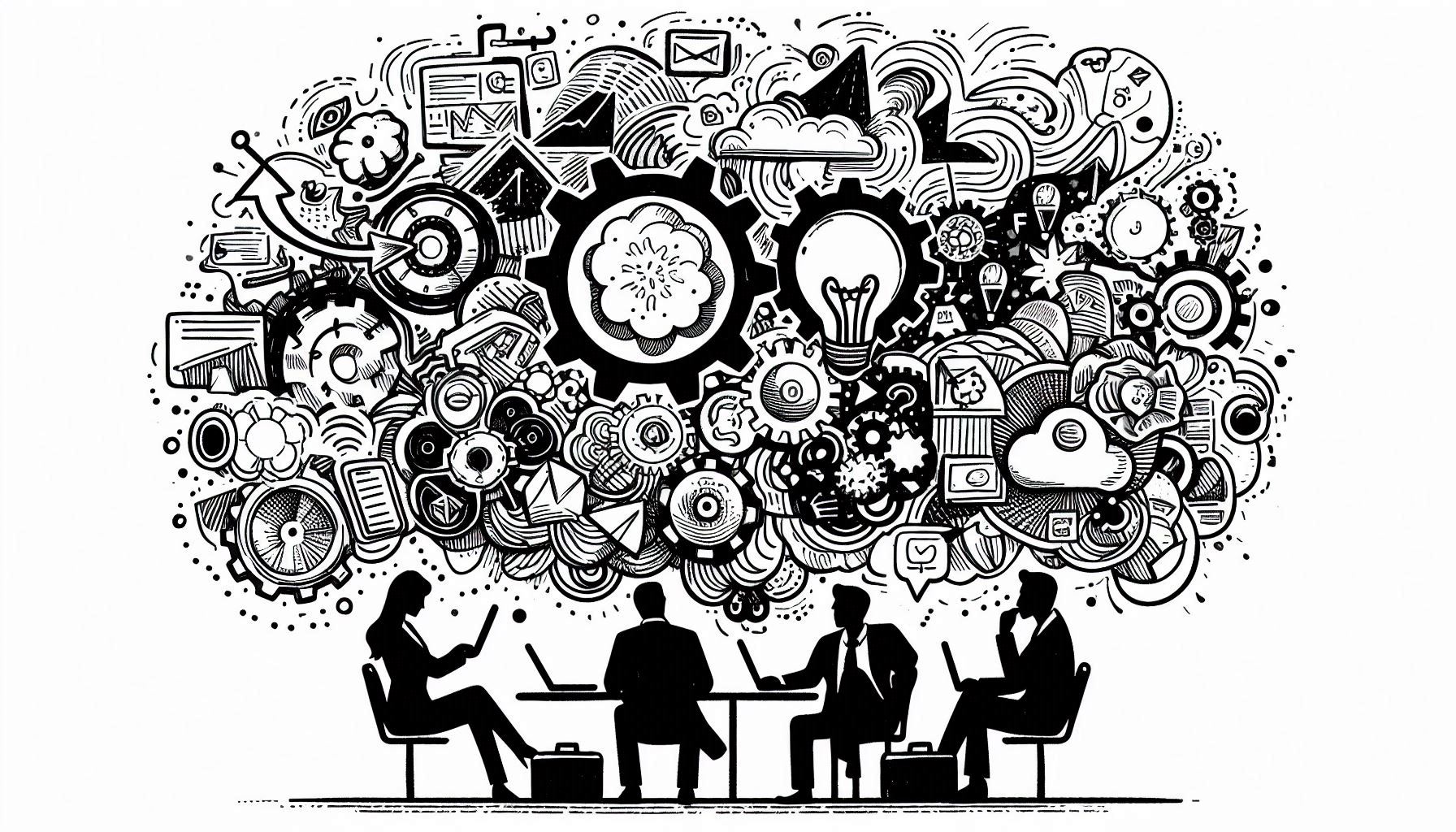
Creative Methodologies for Marketers (and how to boost them with AI tools)

For marketers, creativity isn’t just a nice-to-have—it’s a must. Whether you’re cooking up a fresh campaign or crafting the latest product design, having a structured creative process is your secret weapon for standout results. Let us explore into how mixing traditional methods with the latest AI tech can supercharge your design and marketing game.
The Importance of Giving Structure to Creative Processes
A structured creative process? Think of it as your GPS from ideation to execution. It keeps you on track, promotes teamwork, and ensures you hit every creative milestone. Here are some go-to methodologies, each with their own flair:
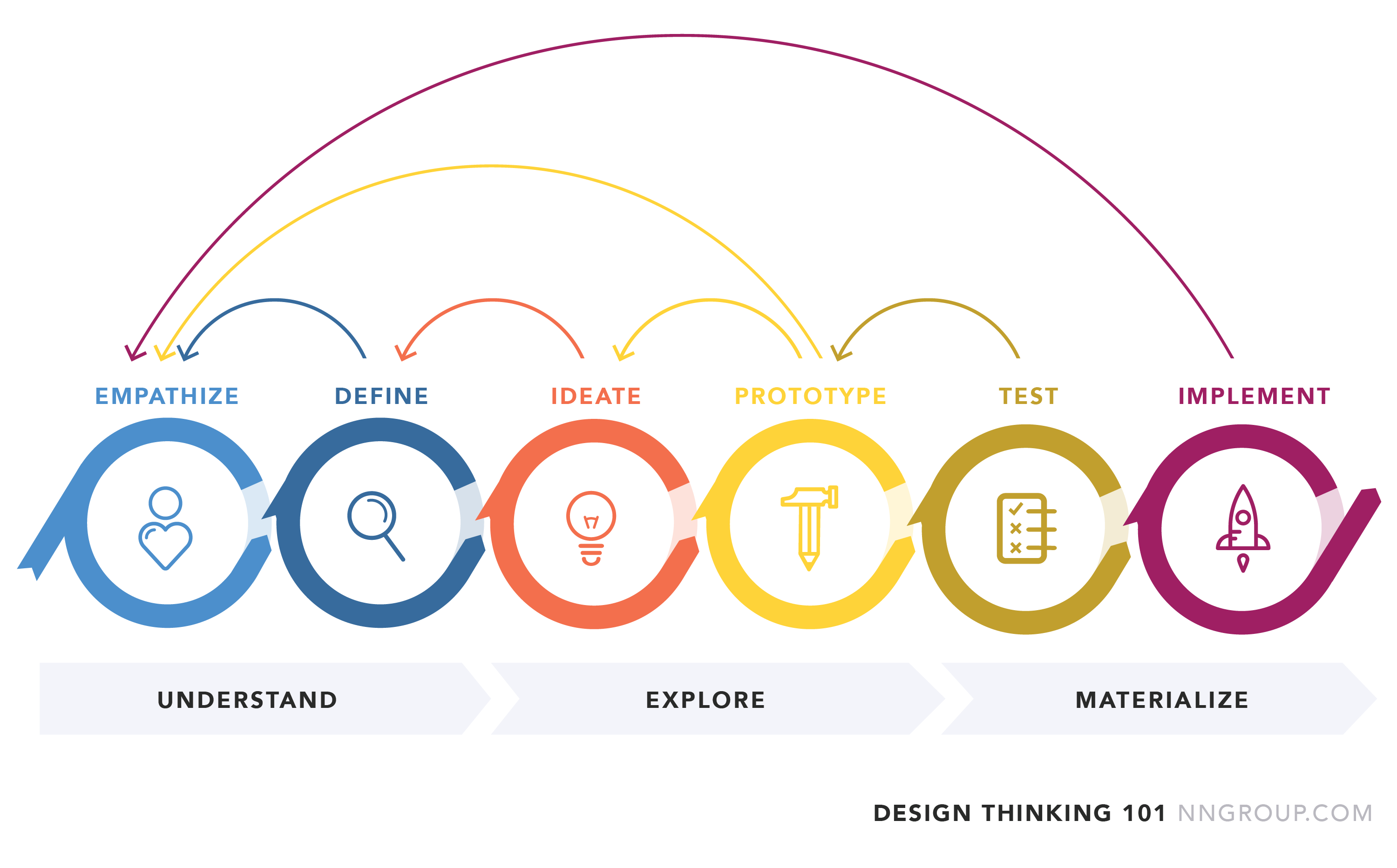
Design Thinking
- Overview: Focuses on the user, blending empathy, ideation, prototyping, and testing. It’s all about understanding what people need and delivering creative solutions.
- Impact: Brings real innovation by addressing actual user needs.
- Pros: Enhances empathy, promotes out-of-the-box ideas, iterative improvements.
- Cons: Can be resource-heavy and time-consuming.
How Can AI Boost This Methodology?
AI enhances Design Thinking by providing deep insights into user behavior and preferences, which are crucial for empathizing with users. AI tools can automate data collection and analysis, offering a more detailed and comprehensive understanding of user needs. This allows teams to focus on generating creative solutions and iterating on prototypes based on robust data.
Recommended AI Tools
- IBM Watson: For sentiment analysis and user behavior insights.
- Adobe Sensei: For generating design variations and understanding design trends.
- Qualtrics XM: For gathering and analyzing user feedback efficiently.
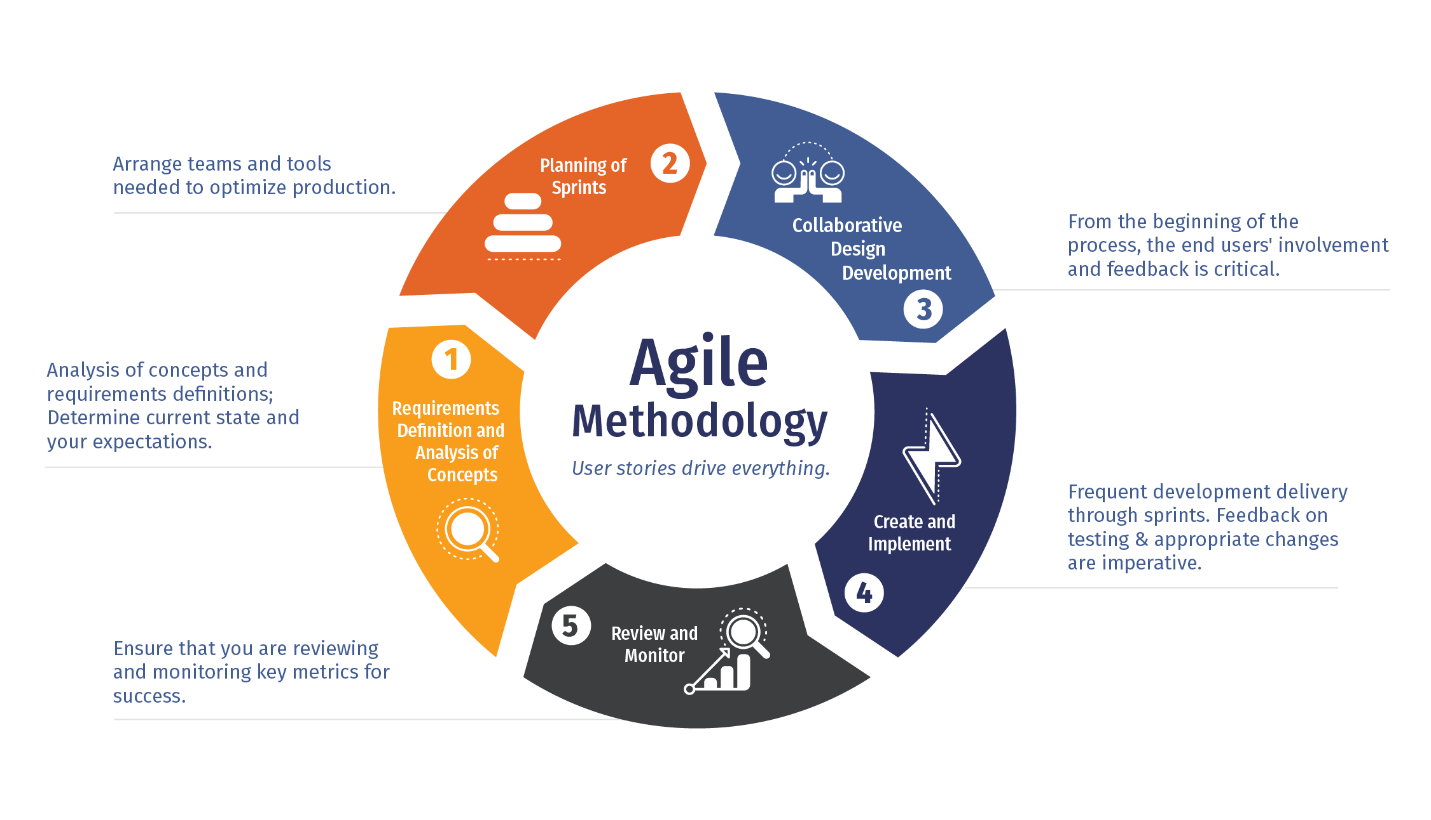
Agile Methodology
- Overview: Born from software development, Agile is all about adaptability and collaboration, working in sprints to refine and perfect.
- Impact: Keeps projects flexible and responsive to change.
- Pros: High flexibility, regular feedback loops, quick turnaround.
- Cons: Needs disciplined management and can lead to scope creep.
How Can AI Boost This Methodology?
AI can streamline Agile workflows by predicting project timelines, optimizing resource allocation, and automating routine tasks. It can also facilitate better communication and collaboration among team members by providing real-time updates and insights.
Recommended AI Tools
- JIRA with AI plugins: For project management and predictive analytics.
- Trello AI: For task management and automation.
- ChatGPT: For generating agile reports and summaries.
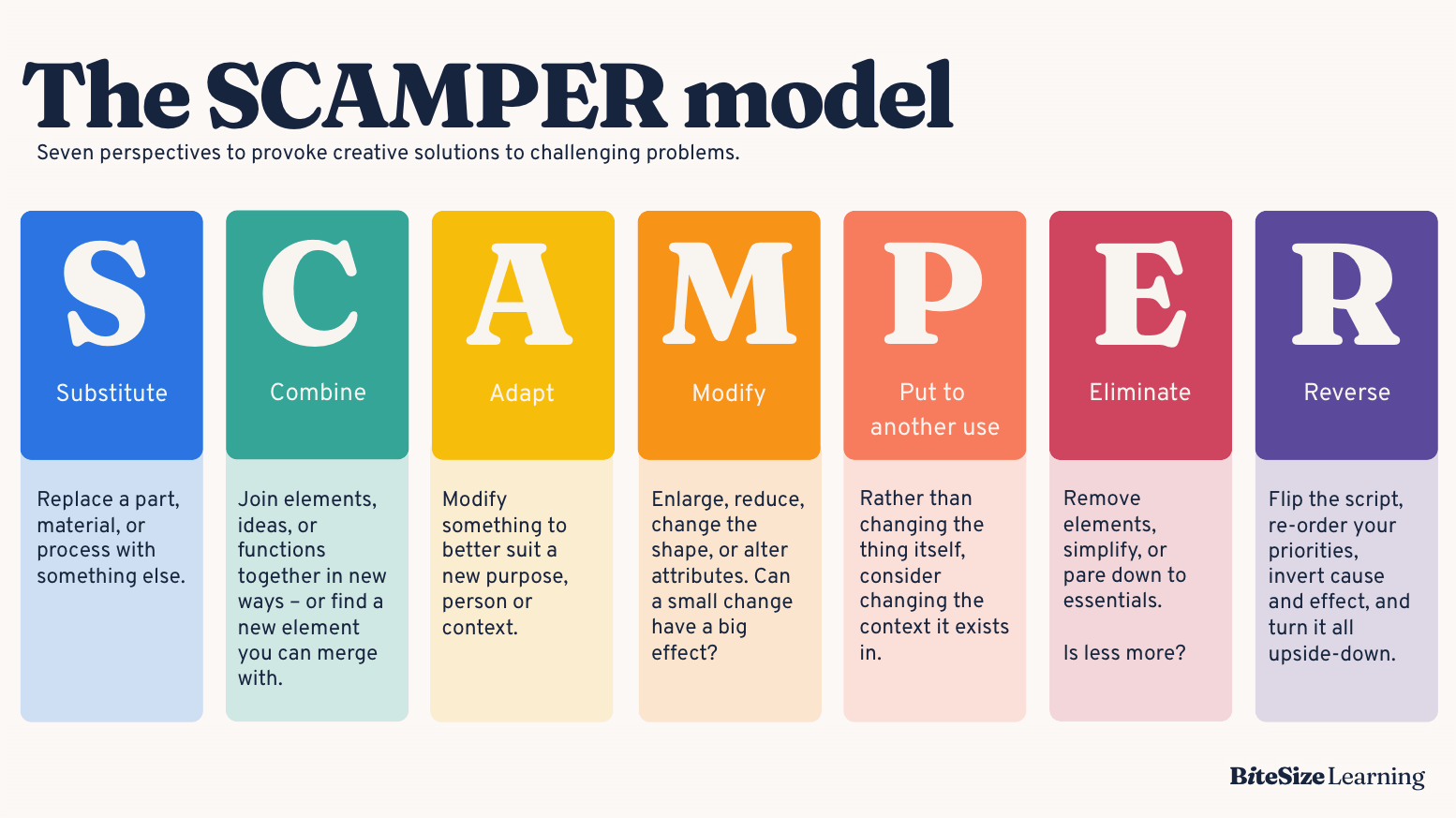
SCAMPER
- Overview: Uses seven strategies to tweak and transform ideas, sparking creativity.
- Impact: Generates a variety of creative solutions.
- Pros: Easy to implement, adaptable.
- Cons: May produce a flood of ideas that require thorough vetting.
How Can AI Boost This Methodology?
AI can enhance the SCAMPER technique by generating multiple creative alternatives and evaluating their feasibility. AI-driven brainstorming tools can provide a vast array of ideas and help teams explore unconventional solutions.
Recommended AI Tools
- Brainstormer: For generating creative ideas using AI.
- Lucidchart with AI: For visualizing and organizing SCAMPER ideas.
- ChatGPT: For generating and refining brainstorming ideas.
How AI is Revolutionizing Ideation
By analyzing vast datasets, AI provides insights that guide the creative process. Tools like MidJourney and DALL-E 2 generate multiple design variations, offering fresh perspectives and freeing up time for more strategic tasks. AI tools can suggest design tweaks based on user preferences, helping creatives hit the mark faster and more effectively. These generative AI tools leverage advanced algorithms to analyze existing designs, understand user preferences, and create novel designs that resonate with the target audience.
Platforms like DeepArt and Artbreeder use neural networks to transform simple sketches into detailed artworks, providing a robust foundation for creatives to build upon. These tools not only generate diverse design options but also allow for fine-tuning and customization, enabling designers to experiment with different styles and elements effortlessly.
Successful Cases of Ideation Using Structured Methodologies
- Netflix: Beyond using Design Thinking to evolve their services based on user needs, Netflix adapted its business model from DVD rentals to streaming services using SCAMPER’s “adapt” principle, staying relevant in a changing market and dominating the streaming industry.
- Airbnb: Adopted Design Thinking to enhance user experience by emphasizing empathy and understanding customer needs. Extensive user research led to significant platform improvements, making it more user-friendly and visually appealing.
- Spotify: Employs Design Thinking to innovate its music streaming service. By focusing on user feedback and iterative design, they developed features like personalized and collaborative playlists, boosting user engagement.
- Beyond Meat: Utilized Design Thinking to create plant-based meat alternatives, focusing on consumer desires for healthier, sustainable options. Iterative product designs based on feedback led to successful market adoption.
- Adidas: Used the SCAMPER technique by “putting to another use” ocean waste to create sustainable footwear, addressing environmental concerns and appealing to eco-conscious consumers.
- Sushi Burrito: Exemplifies SCAMPER’s “substitute” and “combine” techniques. By combining sushi and burrito elements, restaurants created a culinary trend that attracted diverse customers.
Read more on these case studies at The Knowledge Academy and The Decision Lab.
Thinking for Long Term
Structured processes and AI tools are your dynamic duo for driving innovation and efficiency. They enhance ideation, provide deep consumer insights, and streamline workflows. Using frameworks like Agile Marketing and AI analytics ensures your marketing efforts are both responsive and relevant.
Embracing AI and structured creative processes isn’t just about immediate wins—it’s a long-term strategy for staying ahead. As AI continues to evolve, blending human creativity with machine intelligence will lead to groundbreaking results and sustainable growth. This post is just the start; stay tuned for more insights on maximizing AI and structured methodologies in your creative pursuits.
